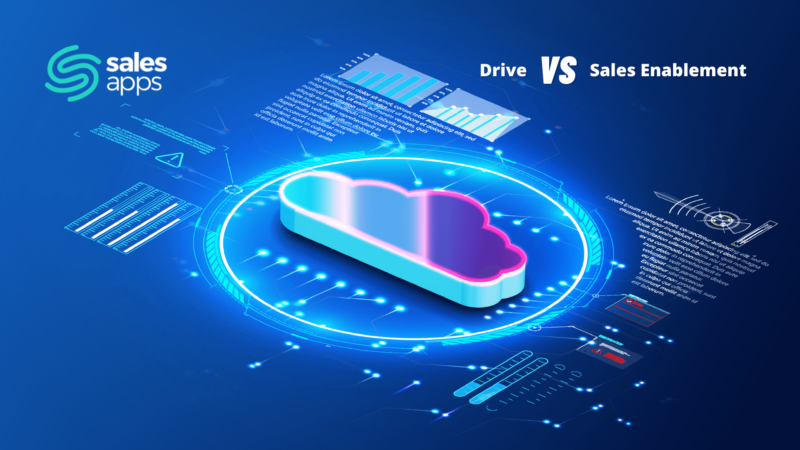
Blog
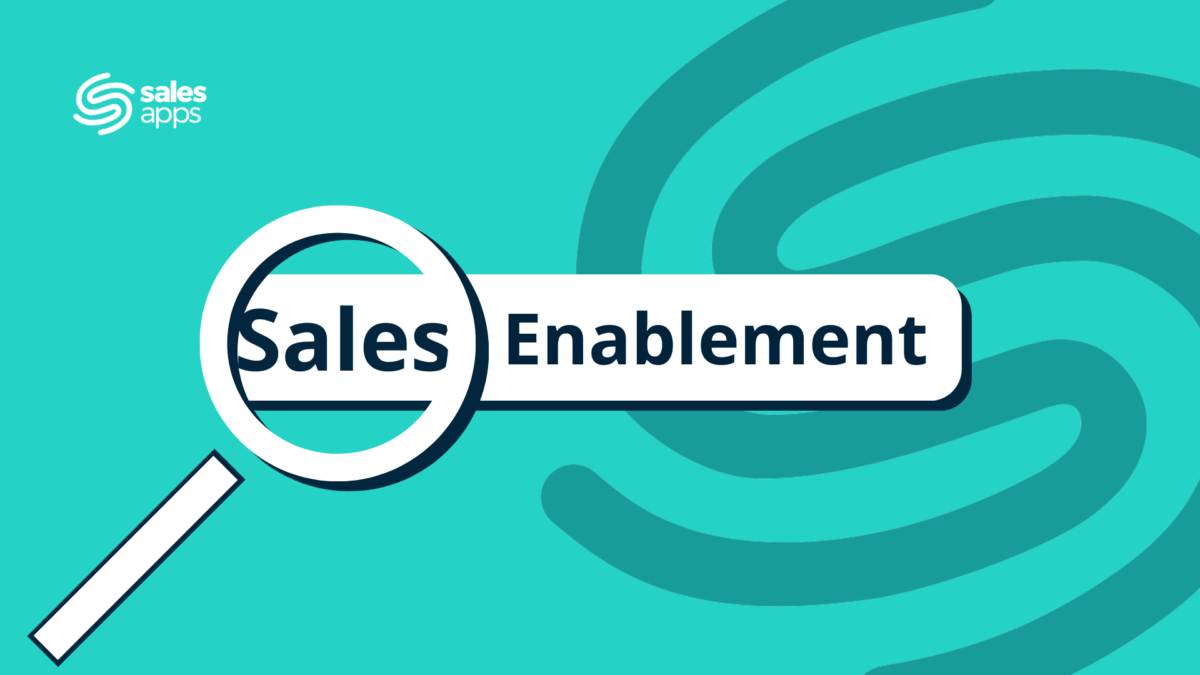
What is Sales Enablement?
Sales Enablement is a strategic approach to optimizing the performance of sales teams by providing them with the training, tools and content they need to succeed. It's about equipping them with the knowledge, skills and resources they need to better understand customers, present offers convincingly and close sales faster. Ultimately, Sales Enablement enables companies to increase sales and improve profitability.
Let's delve deeper into the subject by addressing the three essential components of Sales Enablement:
I) Sales Enablement, the 3 key points
1. Align Sales & Marketing teams in real time
Aligning sales & marketing through a Sales Enablement application will ensure that the content used by the sales force on a daily basis is updated in real time.
This content, available on all devices in online and offline mode (off-line) from a PC, tablet or smartphone, is directly accessible in the sales process of the salesperson during his or her appointments or for the preparation of the latter.
Synergies between management, marketing teams and sales forces are strengthened, the time required to report and analyze information from the field is reduced, and decision making based on clear KPIs is accelerated.
2. Enhanced sales performance
Sales efficiency is the cornerstone of sales, yet salespeople spend too much time on administrative tasks. By providing them with a better tool to help them prepare their appointments, by transforming marketing content for sales and by automating their visit reports, you can improve their day-to-day efficiency. Freed from time-consuming administrative tasks, they can devote more time to their core business: selling.
The Sales Enablement application helps sales reps to improve their performance. With efficient appointment preparation and an application that facilitates the contextualization of appointments, sales reps can adapt to the context and challenges of each buyer. They are more effective in their argumentation and the answers they provide, making it easier for buyers to project their ideas and accelerate their decision-making. Thanks to themodern image they project, their better command of the offer and the sales pitch during meetings, salespeople see their conversion rate increase.
3. Create the appointment sales experience
The sales experience is a strong expectation expressed by buyers and a key point in improving sales performance. Being built around the appointment, the Sales Enablement application follows its course and allows the salesperson to hit the bull's eye by delivering the right content at the right time in the right context.
It provides the buyer with precise information and contextualizes his approach around personalized sales paths (by persona, sector, type of company, etc.). The content presented is thus much more effective by creating a more immersive meeting context for buyers.
The Sales Enablement application creates the long-awaited customer experience, not only allowing you to differentiate yourself from your competitors, but also stimulating interactions with your contact. The latter is then more receptive and collaborative, you stand out and score valuable points.
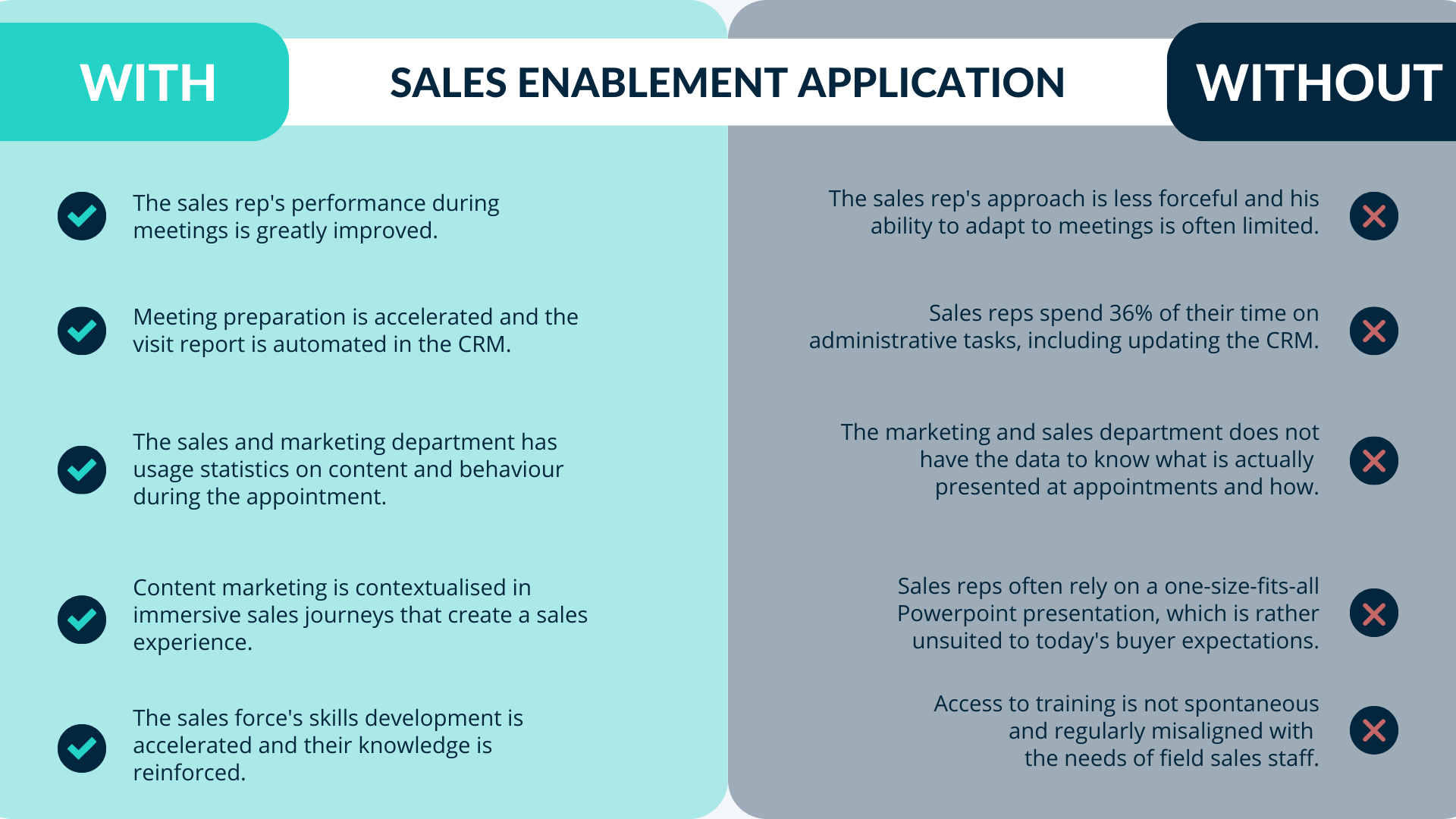
II) Why is Sales Enablement important?
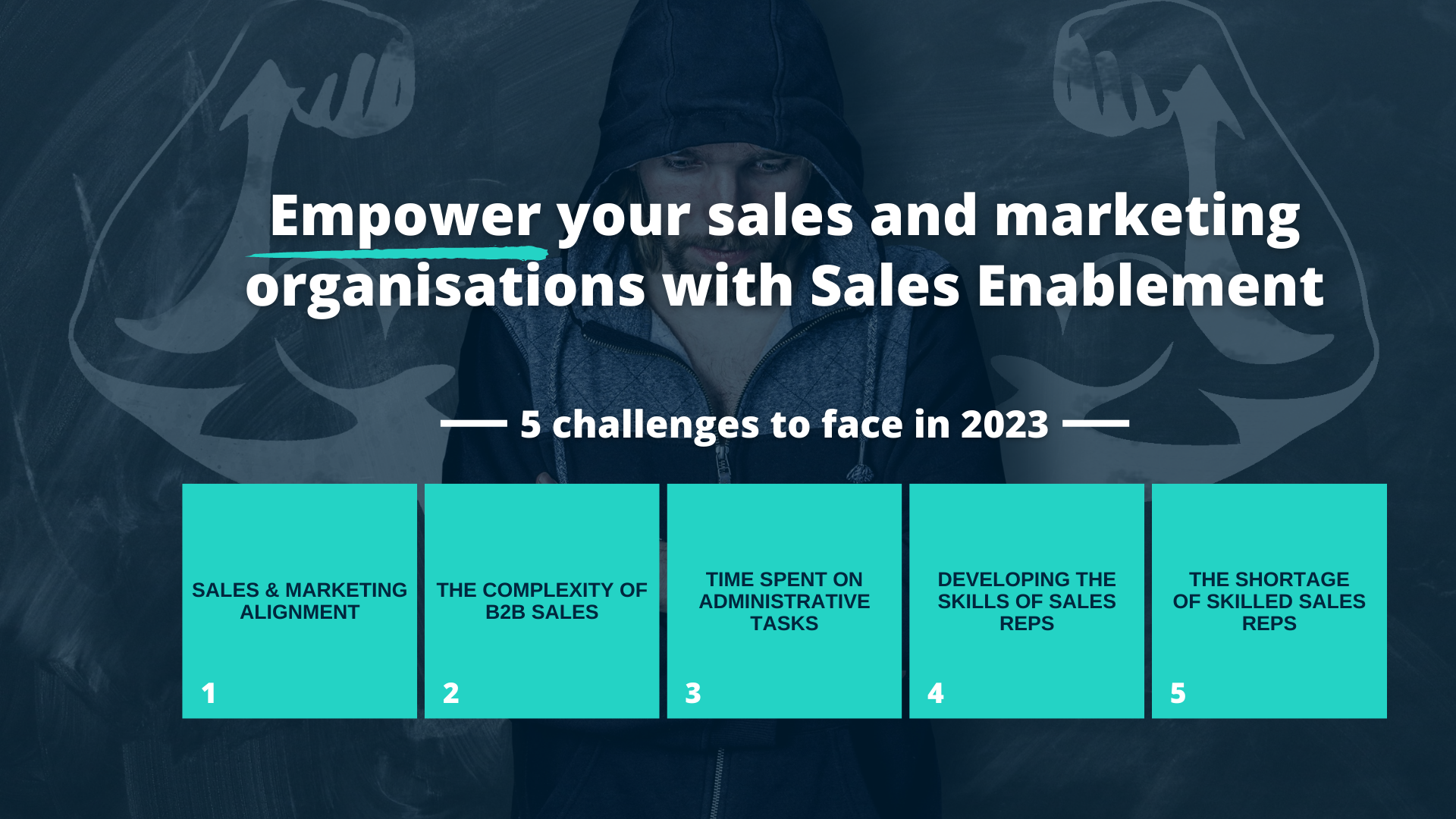
1. Sales & marketing alignment
Within organizations, there are two essential and supposedly closely-knit divisions working to develop the company's business: the sales division and the marketing division. Although their missions are geared towards the same objective, i.e. company development, in practice the marketing and sales departments interact little on a day-to-day basis. This is a common observation: 60% of companies feel that their marketing and sales reps departments are not aligned. (Barometer 2021 - Action Co & DCF)
This is alarming, given the impact this alignment has on the use of marketing content by sales reps. According to Forrester, 65% of marketing content created for sales is never used because it's irrelevant, out-of-date or cannot be personalized. As a result, 40% of sales reps customers create their own content for want of anything better (Hubspot).
So it's time to align Sales & Marketing with a simple tool that saves sales reps time and ensures that everyone is using the best content for sales.
2. The complexity of B2B selling
Salespeople are faced with a more demanding and autonomous buyer. Purchasers carry out 57% of their buying process before initiating contact with the supplier they are considering (Accenture).. In some sectors, buyers even reserve their calls to sales until the very end of the purchasing process. As Forrester's study underlines: 68% of B2B buyers make their purchasing decisions before ever meeting a salesperson (Forrester).
Selling has also become more complex, thanks to the lengthening of the sales cycle. An average of 7 people are now involved in the purchasing process of a company with 100 to 500 employees (Gartner). The number of purchasing interactions has also increased, from 17 in 2019 to 27 in 2021 (Gartner). This trend is set to continue and even intensify in 2023!
Against this backdrop, salespeople need to be able to answer buyers' questions easily, and provide the right information at the right time to speed up stakeholders' decision-making. A Sales Enablement tool can professionalize this approach and adapt it to the length of the sales cycle.
3. Time spent on administrative tasks
65% of sales managers believe that sales reps spend too much time on non-sales related activities (McKinsey). Between researching content, preparing presentations, feeding the CRM... sales reps spend almost 36% of their time on administrative tasks (Value Selling Associates). The Sales Enablement tool frees sales reps from these time-consuming tasks, allowing them to devote more time to their core business: selling!
4. Enhancing the skills of sales reps
Around 87% of the knowledge acquired during a traditional training course is forgotten by participants one month later (Hermann Ebbinghaus). This is an important subject for study, given that sales reps can answer only 40% of B2B buyers' questions about the product being marketed (Allego) .
Managing effective skills development is a major challenge. Whether it's training and planning new recruits, coordinating and ensuring the success of product launches, developing the expertise of sales teams, cross-selling... all these situations have a direct impact on your sales performance. Having a tool that facilitates access to training content, builds confidence, accelerates skills development and enables sales reps to assess their knowledge autonomously, must be a priority.
5. A shortage of qualified sales reps
Attracting and retaining sales reps is a growing challenge for companies. With the shortage of qualified sales talent, it's increasingly difficult to find and retain high-performing sales reps . More than 200,000 sales reps are needed in France, a figure that illustrates the scale of the challenge (Michael Page). By modernizing your sales approach, the Sales Enablement tool enhances your company's attractiveness, makes it easier for candidates to project themselves into their future activity, and reduces sales force turnover.
6. Sales Enablement: the path to performance in 2023
Sales Enablement is the path of choice for marketing and sales managers wishing to meet these challenges: 84% of sales reps customers equipped with a Sales Enablement unit achieve their objectives (G2 Learn Hub). Sales Enablement helps you sell more, sell better, accelerate the skills development of your new recruits and reduce the turnover of your sales teams. Sales is once again at the heart of your sales force's activity. At Salesapps, our customers report an average increase in sales of between 5% and 15%.
III) What is a Sales Enablement application?
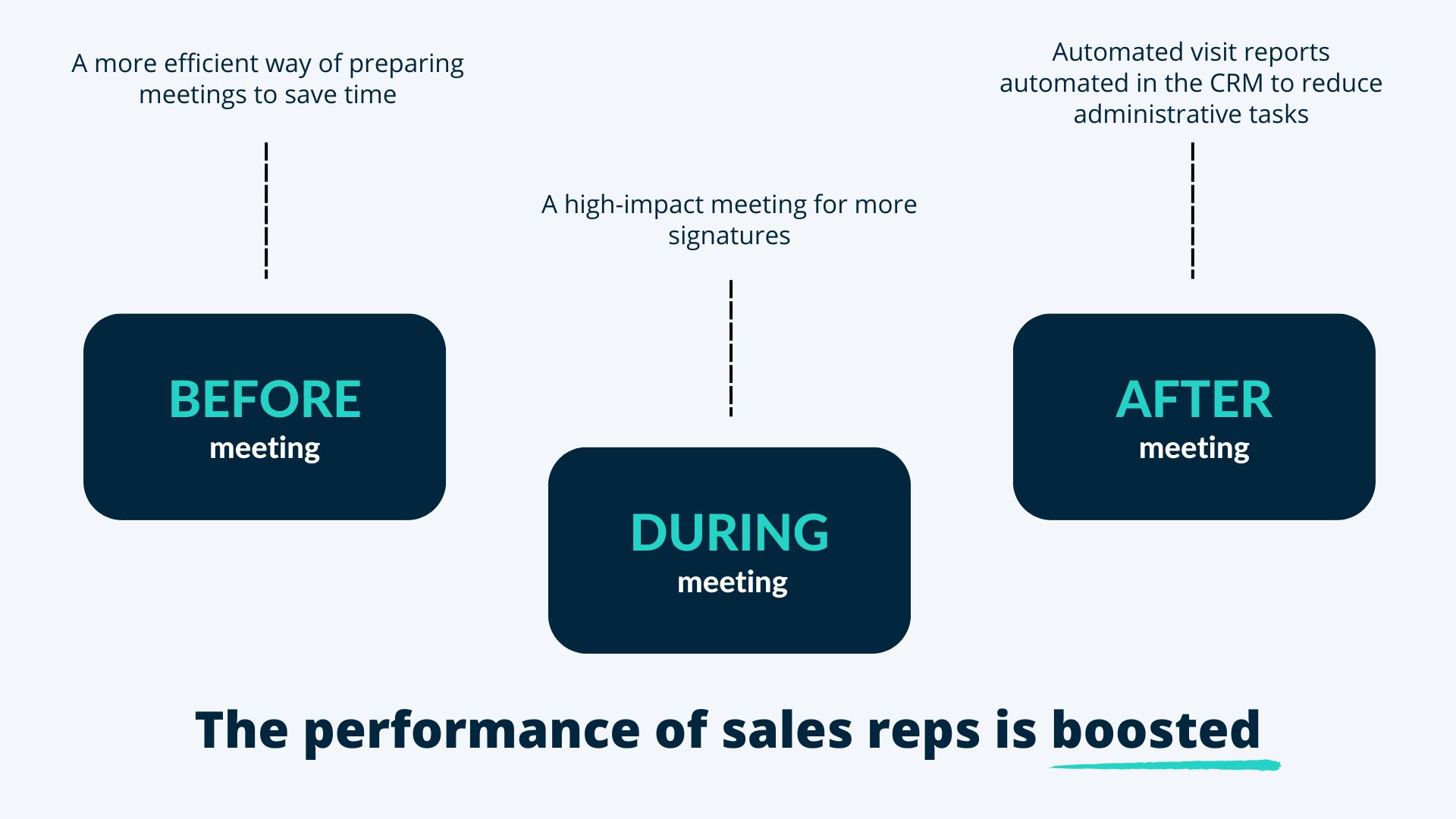
The Sales Enablement application is, in a way, the salesperson's armed arm. It improves performance at every stage of the sales process, so that sales reps are better equipped to create a new sales experience with the buyer, enhance the value of their offer and sell more!
1. Before the appointment:
The application enables sales reps to speed up andimprove their appointment preparation by quickly identifying the marketing content they need to personalize their sales approach and make an impact in meetings.
2. During the appointment:
Whether in the classroom or remotely, the application allows sales representatives to modernize their approach, to contextualize it and to be more relevant in their arguments and in the answers they give to the buyer's questions.
3. After the appointment :
The application automates the creation of the salesperson's visit report directly in the CRM by detailing the information related to the appointment. The time spent by the salesperson on administrative tasks is thus greatly reduced, so he/she can devote more time to sales-related actions.
To boost your sales performance, Salesapps provides sales and marketing forces with over 200 functionalities. Sales Enablement's application goes far beyond operational support for sales staff, enabling marketing and sales managers to collect and analyze data through decision-support KPIs. Sales Enablement is part of a continuous improvement approach to sales performance.
IV) Who is Sales Enablement designed for?
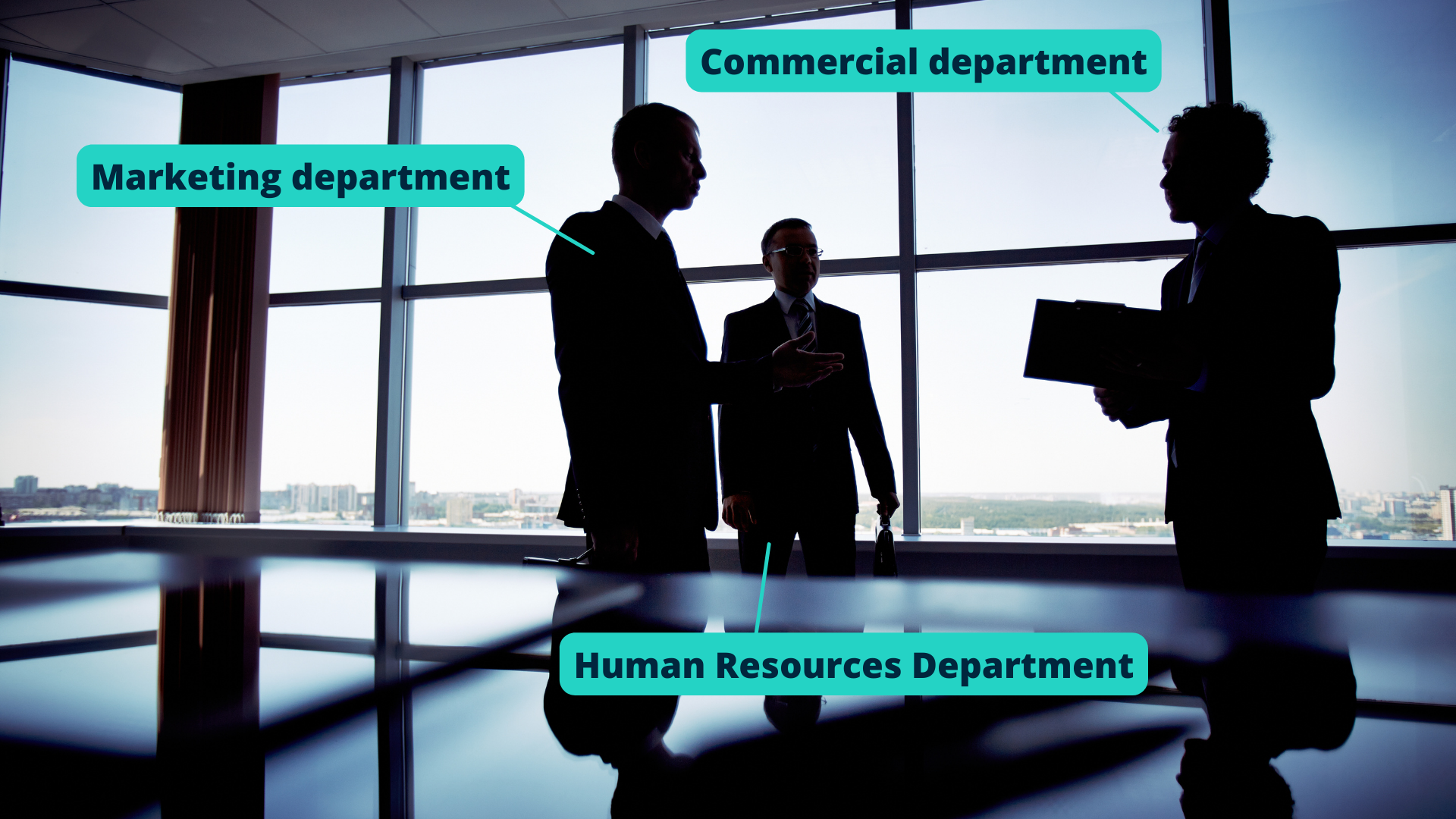
Every department has an interest in using a Sales Enablement application. Whether you are a marketing department, a sales department or a human resources department, you can support your teams in a more collaborative approach and drive your sales force upwards.
1. Marketing Department
The Sales Enablement application improves the effectiveness of marketing content by making it easily accessible on contextualized sales paths for sales reps. The tool encourages feedback from the field, increases the use of marketing content and makes your sales reps more effective in appointments. With a Sales Enablement application, your presentations presentations are always up to date, attractive and customizable according to the buyer.
The statistics generated, such as content usage statistics or usage behaviors, provide an information base that can be used to better understand the environment in which the company is evolving, and its needs sales reps and improve practices and tools accordingly.
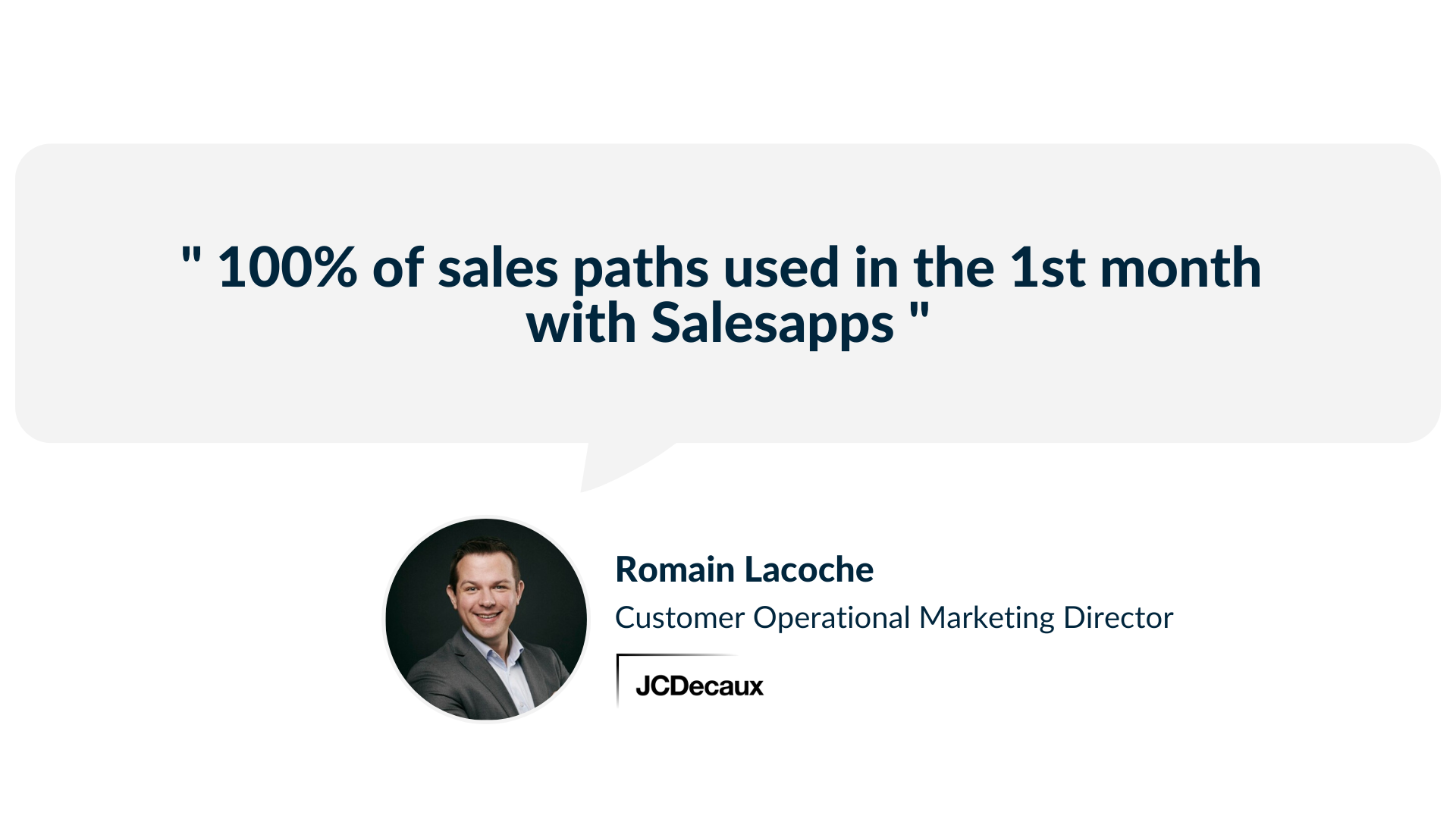
Discover Romain Lacoche's complete testimony
Sales Enablement: why should marketing management use it?
- Aligning content strategy with the needs of the field
- Transforming marketing content into sales content
- Having marketing content that is used, up-to-date and easily accessible
- Benefiting from KPIs to continually adapt strategy
- Discover the other benefits of Sales Enablement for marketing
2. Sales Department
The Sales Enablement application application improves the efficiency of the salesperson in appointments by allowing him to sell more and better ! Inreducing the preparation time for appointments and automating the visit report the sales representative gains in quality time. He now spends more time on the buyer's issues, becomes more forceful and makes proposals during the meeting.
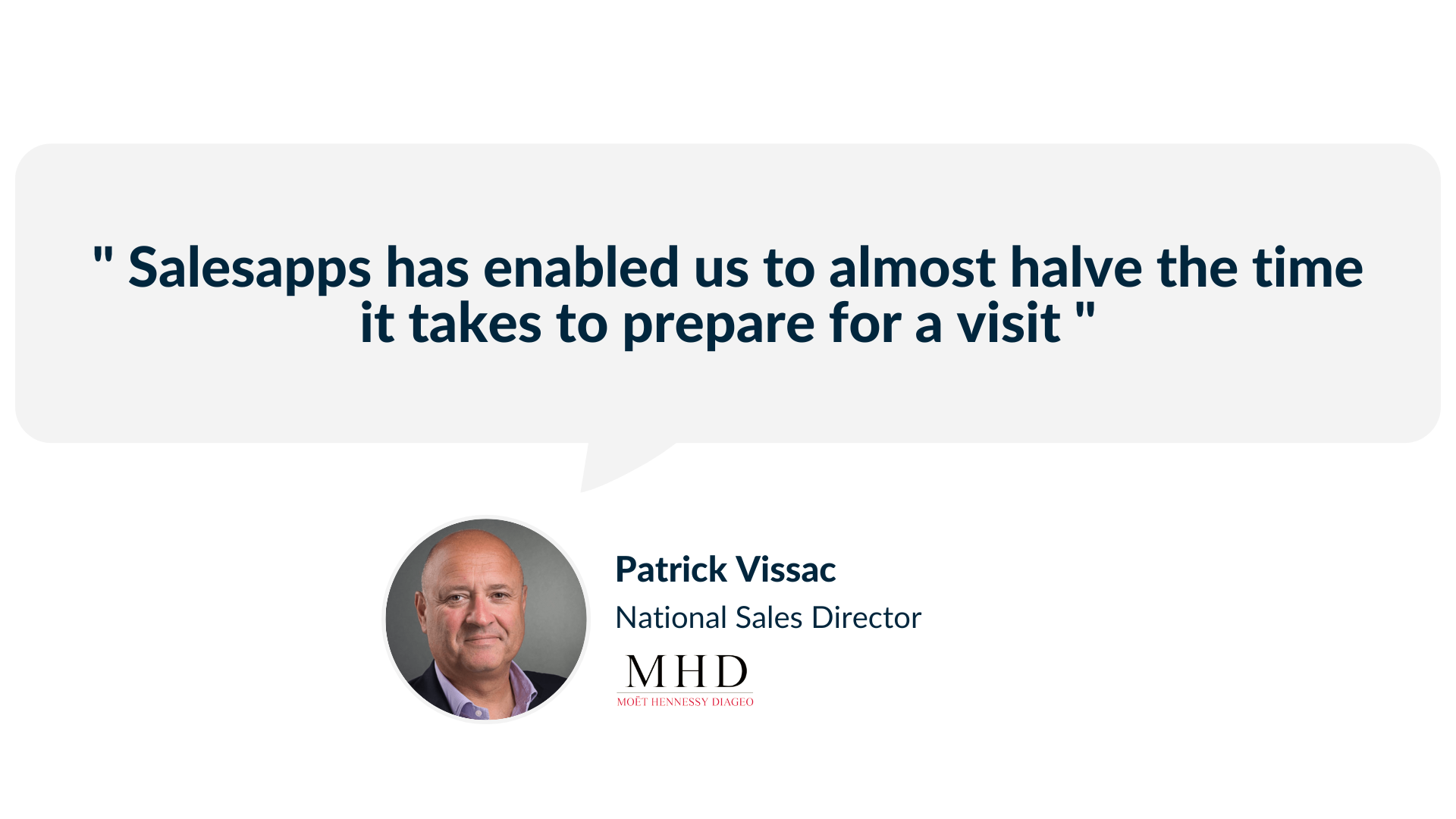
Read Patrick Vissac's full testimony
Sales Enablement: why should Sales Department use it?
- To improve sales efficiency and create a customer experience in appointments
- To reduce the preparation time of sales appointments
- To automate the salesperson's visit report directly in the CRM
- To understand and manage sales activity during appointments
- Discover the other benefits of Sales Enablement for sales
3. Human Resources Department
Training is at the heart of improving sales performance. Boost your brand's appeal, accelerate skills development and and continuously train your sales force are key elements in the success of your sales organization. Thanks to the Sales Enablement application, sales reps are exposed to training content more often. They are autonomous when learning, and confident when pitching the company's offers/services. offers/services. To encourage knowledge development and increase the commitment of your sales repsthe Sales Enablement application includes gamification and quiz mechanisms.

Read Eric Jayet's full testimonial
Sales Enablement: why should human resources departments use it?
- Give training content the benefit of daily exposure
- Personalize training paths according to salespeople's needs
- Make it easier for salespeople to project themselves into their activity, and improve the company's attractiveness
- Reduce the time it takes your sales reps
- Continuously train your sales force in a fun and effective way
- Discover the other benefits of Sales Enablement for HR.
V) Who drives your Sales Enablement strategy?
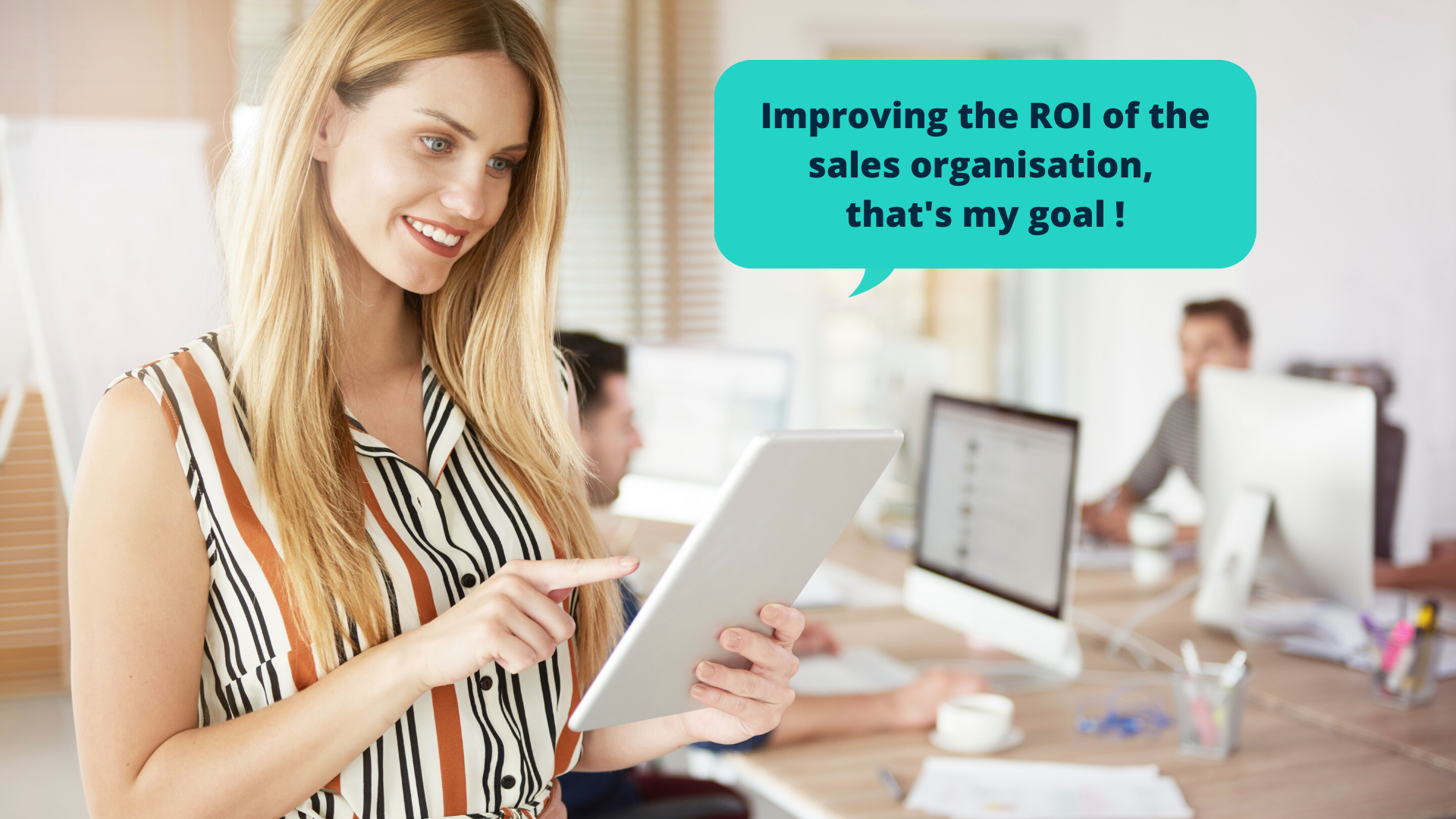
The decision to integrate a Sales Enablement project involves the sales and marketing departments, and even general management, depending on the size of the company. The number of people involved in the day-to-day running and management of the Sales Enablement application varies according to the size of the company, the markets it addresses, its sales channels and the volume of content at its disposal. From a management point of view, there are 3 key phases in a Sales Enablement strategy: the application design phase, which relies on a project team, thesales team onboarding phase, and finally the day-to-day application management and animation phase.
Depending on its size, and at cruising speed (go live), a company will mobilize an average of 1 to 3 people (content manager, animator, administrator), each spending 1 to 4 hours a week managing content updates and platform animation. Whether a member of the marketing or sales department, it's imperative for the pilot to have this dual perspective, and to have the support of a Business Sponsor from management to back up his or her approach and implement the right ROI strategy.
As the stakes of Sales Enablement have become strategic, a new position has naturally emerged: that of Sales Enablement Manager. This function, which is still virtually non-existent in France, is currently being developed mainly in the United States and the United Kingdom. The Sales Enablement Manager is naturally positioned at the crossroads of the sales and marketing teams, and reaps all the benefits of this new profession. His main missions are to manage the improvement of sales teams' performance, ensure the relevance of the tools and content used, align them with the company's objectives, monitor activity KPIs and measure the ROIs of his actions. It is therefore his or her responsibility to deploy and animate the programs, tools and initiatives that will meet the challenges of management while facilitating the work of sales reps in their day-to-day work. We've written a full article on the role of the Sales Enablement Manager. In it, you can find out more about their role in the sales organization, their day-to-day missions and how they are represented worldwide.
VI) How to implement a Sales Enablement strategy?
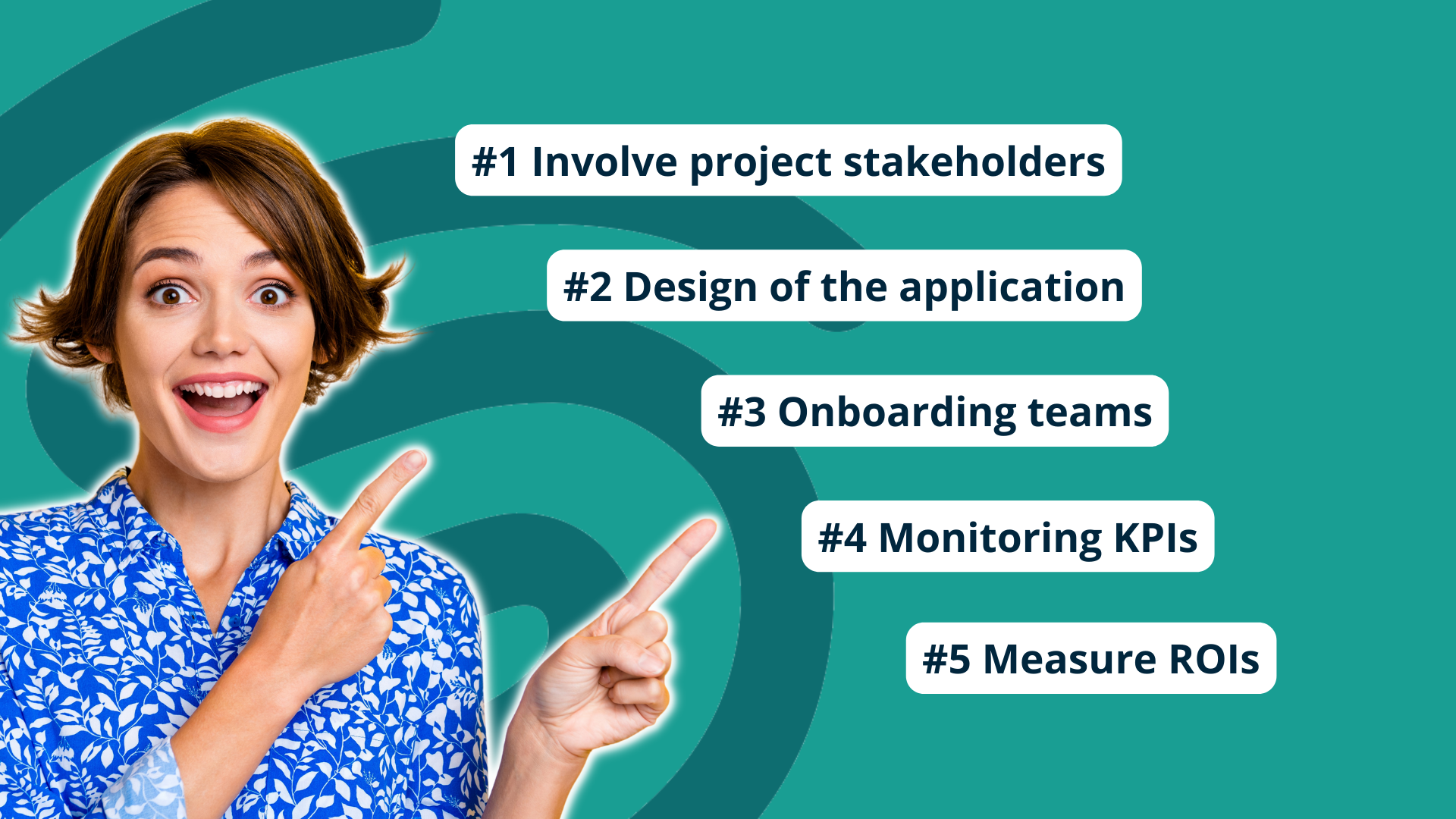
Implementing a Sales Enablement strategy doesn't just happen. It needs to address specific issues and involve a variety of players.
1 - Project participants :
The first person to be involved in the project is the pilot, who will guide and coordinate the project from conception to deployment. When it comes to promoting the tool, you need to involve a Business Sponsor. He or she adds value to your project to support its launch. It is also essential to involve ambassadors, mainly sales reps or sales reps, to have a complementary vision to that of marketing in the first phase of the project. Other profiles will come into play once the application is complete. The Content Manager will be responsible for updating and promoting marketing content. As for theadministrator, he or she will be in charge of animating the application and stimulating its use.
To make your Sales Enablement strategy a success, you need to sequence it in stages:
2 - Application design :
To design a successful sales tool, it's essential to separate the creation of your tree structure from the graphic design. This is also the time when you need to involve your sales and marketing teams to create sales paths that are in tune with the reality on the ground. Another important point is to identify the key content you want to make available to sales reps. The aim is to equip them with useful content so that their pitch hits the bull's-eye in the meeting.
3 - Onboarding sales teams:
It's no easy feat to achieve a 100% usage rate right from the outset! Nevertheless, by involving the Sales & Marketing teams in the design of the tool, you start with a positive point. Taking into account the expectations of the field means guaranteeing the relevance of the tool deployed! It's also essential to create a dynamic around the use of the application from the very first week. To this end, a video teaser of the application is highly recommended to create emulation within the sales force.
4 - Coordination and monitoring of KPIs :
A high-performance application needs to be alive! To keep it alive, you need to update your marketing content and highlight it according to its importance. Several solutions are available: silent notifications, notifications linked to spaces, mandatory notifications.... The application also enables you to highlight your news and stimulate feedback from the field. Finally, you can monitor sales activity through the many KPIs integrated into the application (onboarding rates, usage rates, sales paths followed, content consulted and shared, etc.).
5 - Evaluate your application's ROI :
This step is crucial for measuring the effectiveness of your actions! It's the subject of the next part of this article.
VII) What are the ROIs of Sales Enablement?
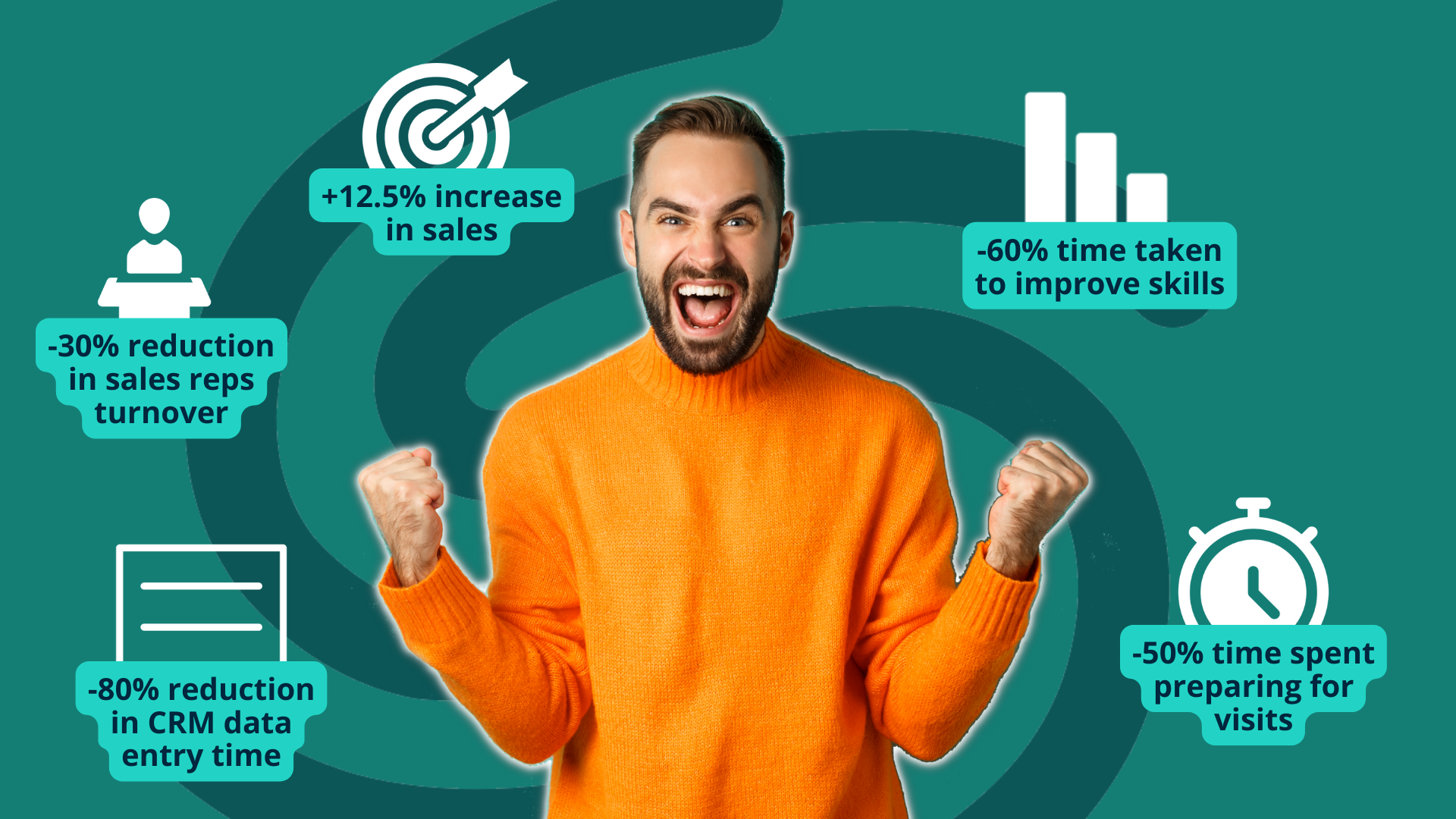
The ROIs of Sales Enablement are no longer to be proven as the following figures can testify:
1 - Save time:
The Sales Enablement application saves sales reps time. Before the appointment, it enables them to more quickly identify the marketing content they need to prepare their presentation. After the appointment, the application facilitates and improves the quality of the data fed back into the CRM, thanks to the automatic creation of the visit report. The result? A 50% reduction in visit preparation time at Moët Hennessy Diageo, and 90% of automated CRM CRs at our customers!
2 - Sell more and better:
For maximum efficiency during appointments, your application adapts to all your sales paths. It enables sales reps to contextualize their approach, become more forceful in their argumentation and create an immersive experience with the buyer. The Sales Enablement application enables sales reps to increase their conversion rate by 5% to 15%, and sometimes even more! Overall, they sell more and better, and increase their cross-selling rate! The Adéquat Group reported a 12.5% increase in sales.
3 - Accelerating skills development :
Exposure to training content is one of the key success factors in developing the skills of your sales force. The greater the exposure, the more effective the sales reps ' training! Our application integrates training paths to accelerate learning and quizzes to continuously test the sales force's knowledge. This is what enabled Thibault Bergeron to cut the time needed to integrate new sales reps by a factor of 4.
4 - Sales Enablement is good for the planet!
By grouping all your marketing content in the application, you make it easily accessible to all your teams. The result? Fewer e-mails, papers, catalogs and brochures in your company (-90% on the Zolux printing budget). The application proves to be an excellent sales support tool when it comes to accompanying sales reps to remote meetings, enabling them to limit their travel time.
VIII) Sales Enablement to plug the gap in your existing tools
1. Why couple CRM with a Sales Enablement application?
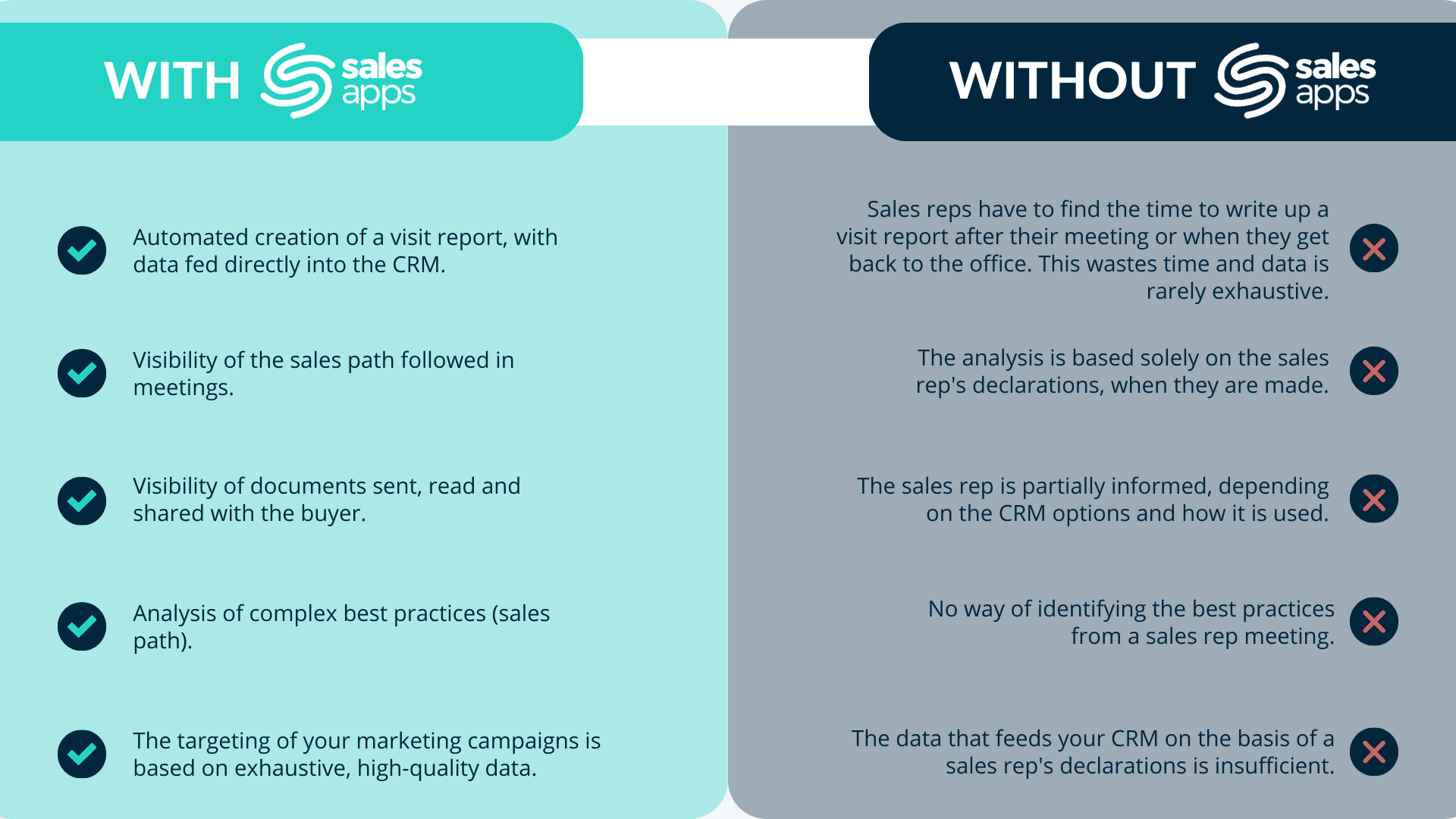
The value of a CRM depends primarily on the richness and quality of the data that feeds it. Yet 77% of companies consider CRM data to be of poor or very poor quality (Gartner). This alarming figure can be explained by sales reps 's disenchantment with administrative tasks. And yet sales reps spend an average of 11 hours a week entering data into CRM (Gartner).. This has a direct impact on sales performance, since they spend less time on tasks directly linked to sales.
Sales Enablement takes automation and data collection a step further. It saves sales reps time at the end of appointments. The application can automatically create a visit report in the CRM, without the intervention of a sales rep, based simply on the progress of the appointment and the content presented. As a result, the marketing & sales department is supplied with quality data. You can collect information about the appointment, something you can't do without the Sales Enablement application (sales path followed in appointments, documents sent, read and shared with the buyer...). Connecting your CRM to the Sales Enablement application has many advantages, which we detail in the article: Why couple a Sales Enablement application to your CRM?
2. Why switch from Drive to Sales Enablement?

Today, 90% of marketing content is not used by sales reps (Jeff Ernst). Instead of relying on a document base specially designed for them, sales reps spend more than 7 hours a week searching for or producing content. The result? Incomplete, less effective content, and a considerable waste of time. Although a valuable aid to document management, drives have 3 limitations that can hamper your sales performance.
-Limits on access to information: the salesperson is responsible for searching for content, and must take the initiative to visit the drive. As a result, they waste time and can't access it at all times.
-Physical limitations: the drive must be connected! Sales reps can't access content where they want, when they want.
-Marketing content presentation limitation: the content display is organized like a documentary database, and is not designed to be used by customers and managed through sales paths. Its use is therefore limited to finding content for preparatory work.
The main consequences of these limitations are as follows: the content is rarely cleaned up, it is added to the drive without optimizing the amount of content present, it is rarely used because it is more practical for the salesperson to recreate presentations from those he or she has already created and stored on his or her PC, the content finally used by salespeople is rarely up to date in terms of data and often does not comply with the guidelines of the graphic charts!
The purpose of a Sales Enablement application is to improve sales performance. This is in no way the purpose of the Drive, which is to facilitate the classification, editing and management of your documents. Switching from Drive to Sales Enablement has many advantages that we detail in the article: Sales Enablement VS Drive: improve your sales performance.
3. Why strengthen your E-Learning approach with Sales Enablement?

According to McKinsey, 50% of the sales force does not have what it takes to succeed in the years ahead. A figure that underlines the extent of the work that needs to be done around sales training. Although e-learning is the training module most favored by companies, it also has a number of limitations, and its usefulness for sales staff could be significantly enhanced.
-Exposure limit: training content is hosted on the e-learning platform whose job it is. But what is the usage rate of the platform outside of mandatory training sessions? Is it a reflex to visit sales reps throughout the year? How often is it used? Is the format fun enough for me to go there spontaneously?
-Limits to training content: do the training paths match the sales paths followed in appointments when the salesperson is face-to-face with a buyer? Do they reflect the real needs in the field to improve performance?
Exposure to training content is one of the key success factors in developing the skills of your sales force. The higher the exposure, the more effective the sales reps training. By using a Sales Enablement application that is used on a daily basis, you expose your sales force to your training content on a continuous basis, even offline, making training and testing a reflex! The results? Successful integration phases for new recruits, lower turnover, product launches mastered by all sales reps, training courses that are as close as possible to the needs of the field, and sales paths. If you'd like to take a closer look at the subject, we'd like to give you 5 reasons to train your sales reps with a Sales Enablement solution.
IX) 50% increase in Sales Enablement budgets by 2027
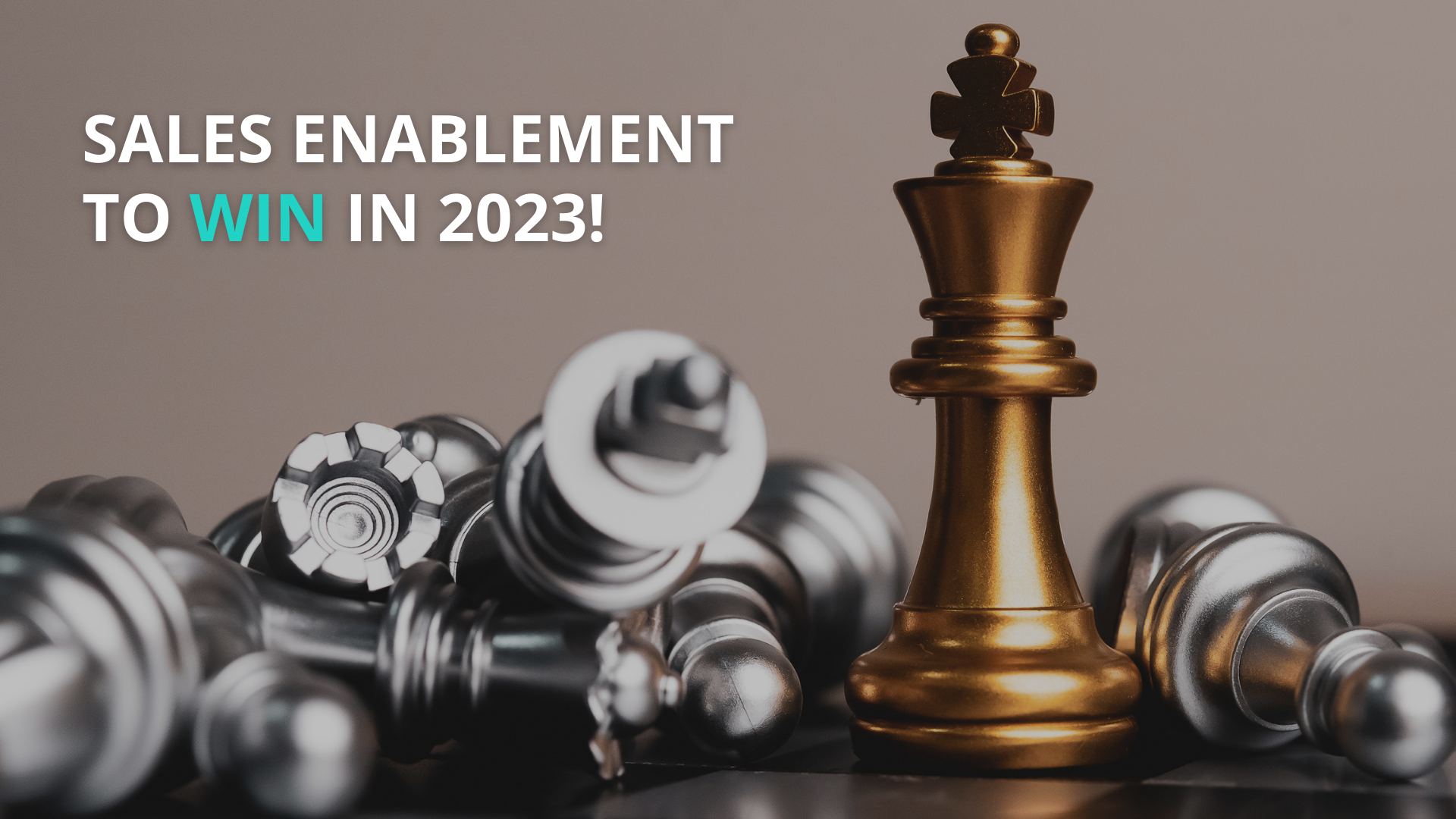
This year, the sales function will face many challenges: insufficient sales & marketing alignment, complexity of B2B sales, high expectations around the buying experience, time wasted on administrative tasks... To succeed in 2023, it needs a budgetary boost! Sales managers have understood this and will invest more in sales enablement tools, according to Gartner. Budgets dedicated to Sales Enablement are expected to increase by +50% over the next five years. This figure shows the growing importance that companies attach to improving their sales performance.
According to Shayne Jackson, Senior Analyst Director - Gartner Practice for Sales Leaders "Sales Enablement has become the most essential function for guiding sales teams...". This increase in budgets is accompanied by new ROI requirements, she explains, "However, budget increases will lead to increased expectations for Sales Enablement results. The onus is on Sales Managers (CSOs) to demonstrate the ROI of Sales Enablement programs as a matter of priority". The good news? The ROIs of Sales Enablement are unquestionable (better sales & marketing alignment, increased sales and margins, accelerated ramp-up, attractiveness and loyalty of sales reps, reduced carbon footprint...) as you saw earlier in the article.
So now's the perfect time to adopt Sales Enablement and get ahead of your competitors. If you're looking to align your sales & marketing teams, improve the performance of your sales reps and deliver a quality customer experience through appointments, look no further than Salesapps.

